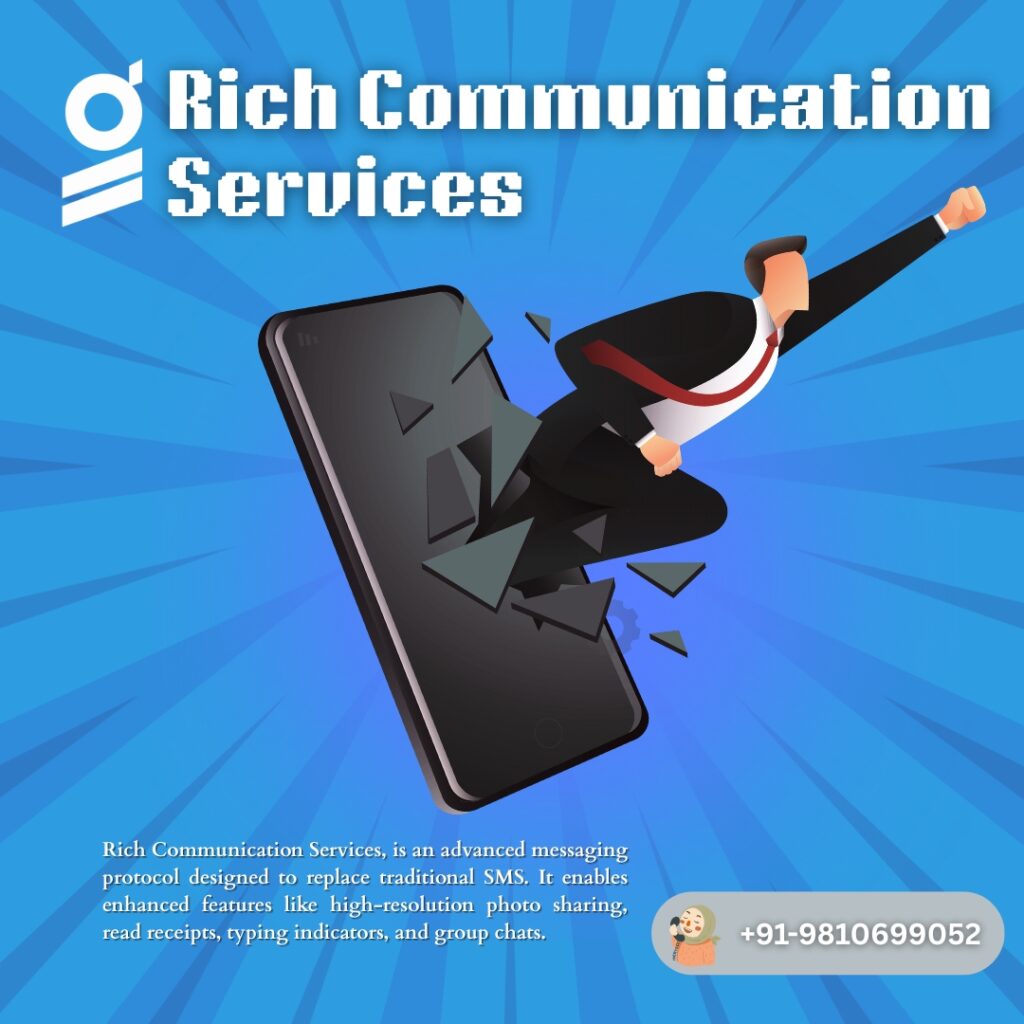In an era where communication is instant and expectations are high, traditional SMS has started to fall short of user demands. Enter Rich Communication Services (RCS) — a next-generation messaging protocol designed to upgrade the way we text on mobile phones. Seen as the successor to SMS and MMS, RCS introduces features similar to messaging apps like WhatsApp and iMessage, but built directly into the phone’s default messaging app.
Let’s explore what RCS is, how it works, and why businesses and mobile users alike should care about its rise.
What is RCS Messaging?
RCS is a communication protocol developed by the GSMA (Global System for Mobile Communications Association) to replace outdated SMS technology. Unlike SMS, which is limited to 160 characters and basic media, RCS enables a more dynamic and interactive messaging experience.
With RCS, users can:
- Send high-resolution images and videos
- Share their real-time location
- Participate in group chats
- Get read receipts and typing indicators
- Receive messages over Wi-Fi or data, not just cellular
The key difference? RCS is natively integrated into Android’s default Messages app — meaning users don’t need to download a third-party messaging app to benefit from enhanced features.
How Does RCS Work?
RCS operates over an internet connection (Wi-Fi or mobile data) and functions through a carrier network or a messaging platform like Google’s Jibe. It requires both sender and receiver to have RCS-compatible phones and services enabled.
For users, enabling RCS is often as simple as turning on “Chat Features” in their Android Messages settings. When both parties support RCS, their messages automatically upgrade from SMS/MMS to RCS.
However, full RCS functionality depends on mobile carriers, device compatibility, and geographic support — which is still rolling out globally.
RCS for Businesses: The New Communication Channel
Perhaps the most exciting use of RCS is in business messaging. RCS Business Messaging (RBM) allows companies to send branded, interactive messages directly to consumers.
Compared to plain text SMS, RCS messages can include:
- Branded sender ID with logo and verified name
- Rich media like product images, GIFs, and carousels
- Suggested reply buttons or actions (e.g., “Book Now” or “Track Order”)
- Interactive menus and appointment booking
- Real-time updates and personalized promotions
This transforms a simple text into a full customer experience without leaving the messaging app.
Use Cases for RCS in Business
- E-commerce: Send order confirmations, delivery updates, and promotional offers with images and call-to-action buttons.
- Travel: Deliver boarding passes, booking confirmations, and flight updates directly to a user’s messaging app.
- Banking: Share account summaries, fraud alerts, or payment reminders with secure, verified branding.
- Healthcare: Send appointment reminders, test results, and prescription alerts with easy scheduling options.
- Customer Support: Offer AI-driven conversational support and escalate to live agents as needed — all within a message thread.
Key Benefits of RCS Over SMS
- Enhanced Engagement: Visual and interactive messages drive higher click-through and conversion rates.
- Improved Trust: Verified sender IDs reduce spam and increase user confidence.
- App-like Experience: Customers interact with messages like they would with an app — without needing to download anything.
- Rich Analytics: Businesses can track delivery, read receipts, and user interactions.
- No Internet Dependency for Brands: Customers only need basic mobile connectivity and a compatible phone.
Challenges and Limitations
While RCS is promising, it’s still in a transitional phase. Some limitations include:
- iPhone Support: Apple does not currently support RCS, meaning communication between iPhones and Androids defaults to SMS.
- Carrier Fragmentation: Not all carriers globally support RCS, which can limit its availability.
- User Awareness: Many users are unaware of RCS or have not enabled it, reducing potential reach.
- Security: Unlike WhatsApp or Signal, RCS does not offer end-to-end encryption by default, though Google is making strides in this area.
Despite these hurdles, adoption is growing, and tech giants like Google are pushing for wider compatibility and security improvements.
The Future of RCS Messaging
Google has been a major proponent of RCS, and with more carriers joining the initiative, momentum is building. Google’s Messages app — now the default on most Android phones — supports RCS, and partnerships with mobile operators worldwide are accelerating its adoption.
RCS has the potential to become the universal messaging standard on Android, bridging the gap between fragmented chat apps and creating a unified experience.
For businesses, RCS represents an untapped communication channel that’s direct, trusted, and engaging — especially in regions where SMS is still widely used but lacks the visual appeal of modern chat apps.
Conclusion
RCS is not just an upgrade — it’s a transformation of the mobile messaging experience. With its app-like features and deep native integration into smartphones, RCS has the potential to redefine how businesses and consumers connect. While adoption challenges remain, the technology is rapidly evolving, and the future points toward rich, interactive, and personalized messaging becoming the new norm.
Businesses looking to stay ahead of the curve should begin exploring RCS now — as early adopters are likely to reap the biggest rewards.


